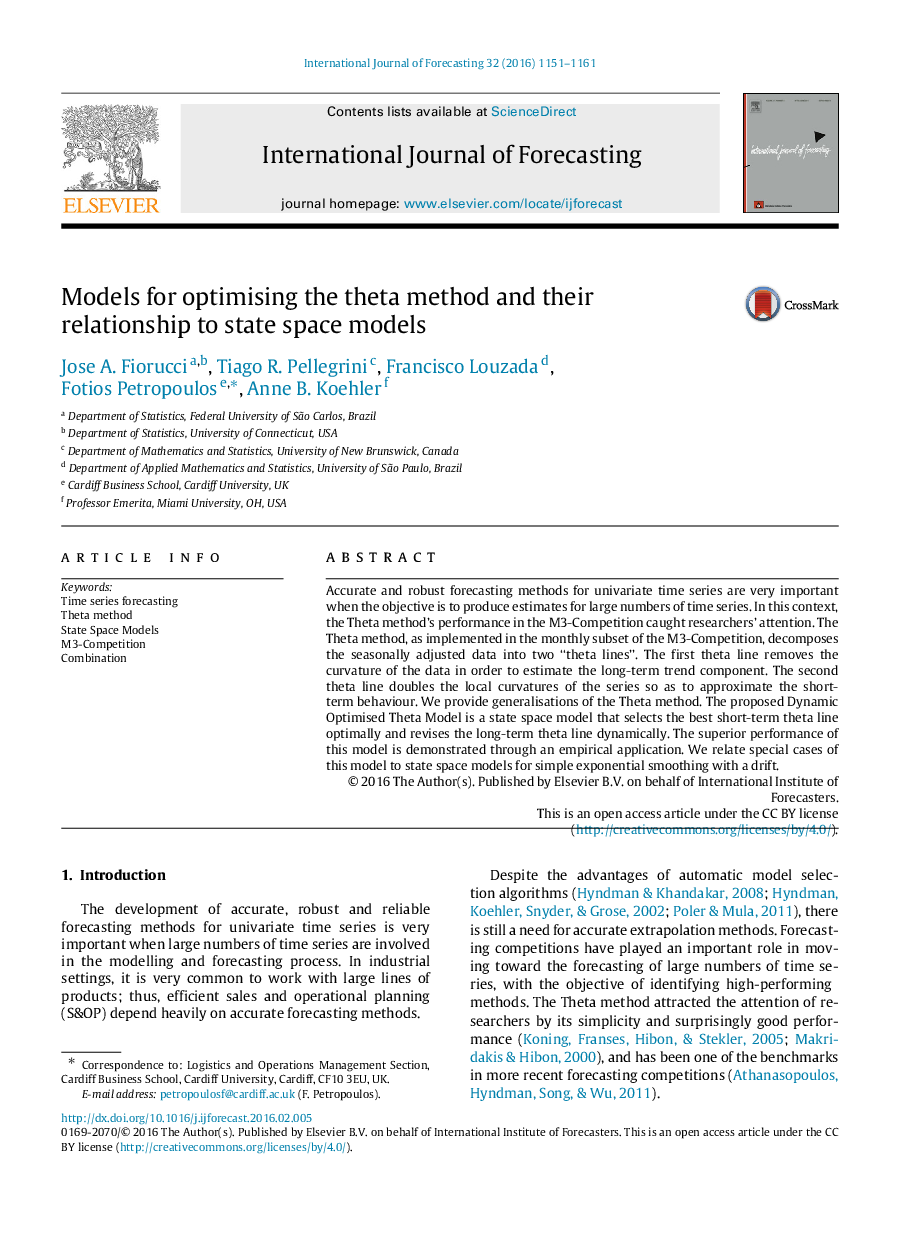| Article ID | Journal | Published Year | Pages | File Type |
|---|---|---|---|---|
| 5106399 | International Journal of Forecasting | 2016 | 11 Pages |
Abstract
Accurate and robust forecasting methods for univariate time series are very important when the objective is to produce estimates for large numbers of time series. In this context, the Theta method's performance in the M3-Competition caught researchers' attention. The Theta method, as implemented in the monthly subset of the M3-Competition, decomposes the seasonally adjusted data into two “theta lines”. The first theta line removes the curvature of the data in order to estimate the long-term trend component. The second theta line doubles the local curvatures of the series so as to approximate the short-term behaviour. We provide generalisations of the Theta method. The proposed Dynamic Optimised Theta Model is a state space model that selects the best short-term theta line optimally and revises the long-term theta line dynamically. The superior performance of this model is demonstrated through an empirical application. We relate special cases of this model to state space models for simple exponential smoothing with a drift.
Related Topics
Social Sciences and Humanities
Business, Management and Accounting
Business and International Management
Authors
Jose A. Fiorucci, Tiago R. Pellegrini, Francisco Louzada, Fotios Petropoulos, Anne B. Koehler,
